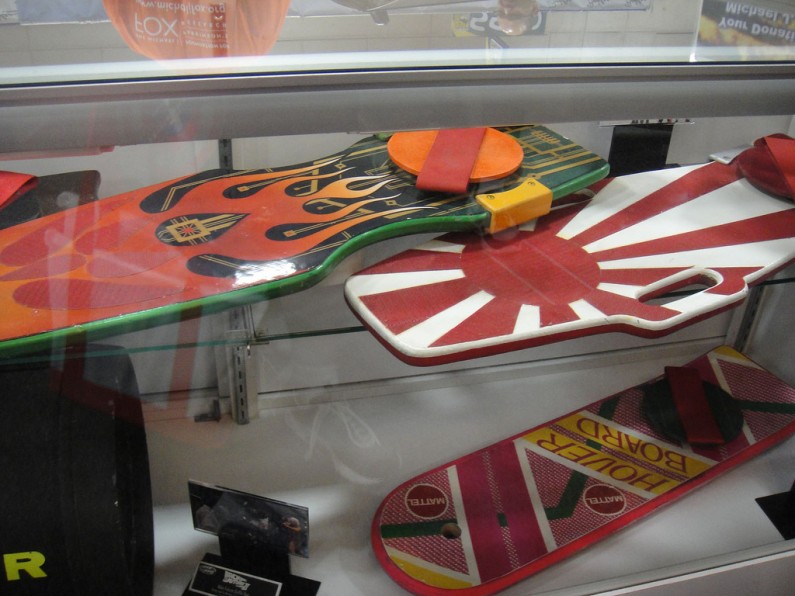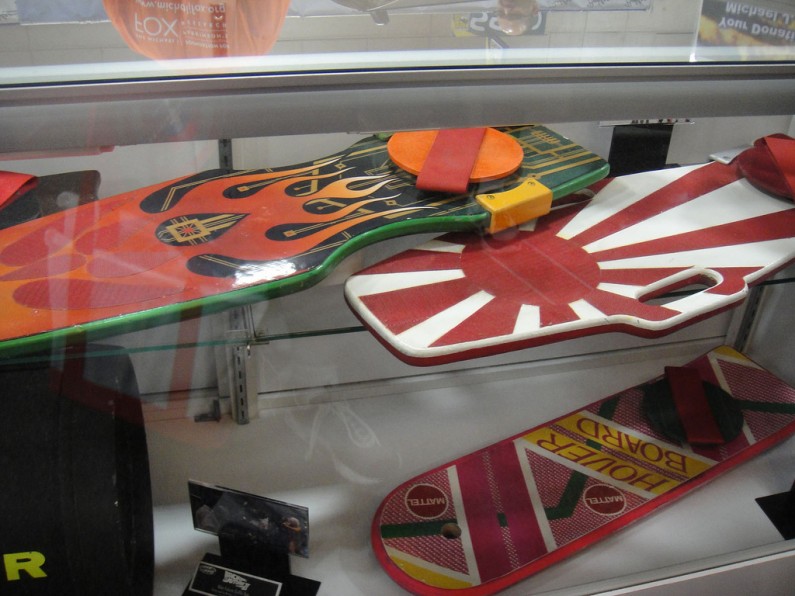

Remember watching the movie Back to the Future Part II and seeing Marty Mcfly riding a hoverboard in the perceived future of the year 2015? Coincidentally, that is possibly close to reality.
Greg and Jill Henderson, co-founders of the California startups Hendo and the parent company Arx Pax, have combined ideas from other technological advancements, and cashed in their life savings, to create a functioning hover board. It’s only in the beginning stages (it lifts only an inch off of the ground) but it’s a great start. The Hendo hover board sort of looks like a skateboard with its sleek design and slanted foot pads, and on the bottom, there are four hover engines. The current version can hold up to 300 pounds, and they hope future versions will hold 500 pounds of more.
The Hendo hover board uses electromagnetic field technology to levitate—similar technology to Japan’s new experimental wonder, the MagLev Train, which floats on its track at immensely high speeds. Also similar to the MagLev trains, the Hendo hover board can only levitate on particular non-ferrous surfaces, like copper or aluminum.
Another complication is its lack of a propulsion system. Test rides have shown that without it, you will tend to drift without direction. According to Greg Henderson, the foot pads are pressure sensitive and control the movements by leaning to one side in the direction you want to go. However, the rider can’t feel the friction of the ground, so it’s hard to tell how much force to exert on each side to navigate.
Henderson and his team are trying to work out the kinks, but his goal is not to revolutionize transportation at all. In fact, Greg is leaning more towards architecture. He patented his vision, calling it Magnetic Field Architecture. On the Arx Pax website, he describes his MFA future endeavor as having the ability to build structures that can be lifted from the ground to avoid major natural disasters, such as earthquakes and floods.
His vision is a far cry from the fantasy of hover vehicles that the public yearns for, but Henderson is aware and admits that advertising a “hoverboard” draws attention to the technology with the hopes that engineers and investors can see its usefulness. Arx Pax even offers opportunities to contribute to hover technology research—at a cost for fundraising. The Whitebox developer kit contains a scaled down version of the hover engines, which are basically meant to be toyed with and analyzed, at a price of $299. The Whitebox Plus has the same scaled down hover engines, but with propulsion and control capabilities from an app on your phone for $899. There’s even the option of buying one of the prototypes outright for $10,000. The idea is for the public to experiment with the technology and be a part of the creative process so that Arx Pax and Hendo can improve their work and make it practical. The hover board research and technology has a long way to go, but has taken a step in an upward direction.
Blog By Joshua Hamer
Sources:
Engadget
Hendohover
NYTimes
Image courtesy of The Conmunity – Flickr License


